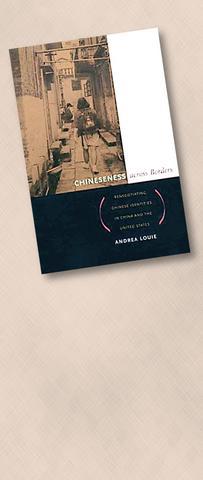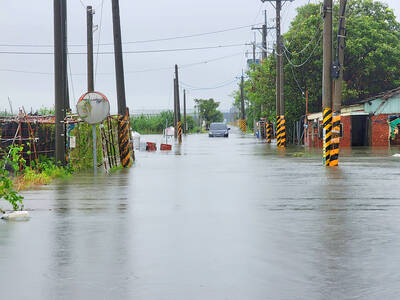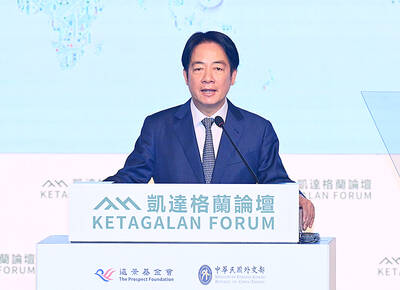Chineseness Across Borders is at heart a study of how Chinese-Americans feel about their origins. It looks primarily at the experiences of the author and others -- all people of Chinese descent born in the US -- who opted to take a trip to China to seek out what they were being encouraged to see as their roots. But it also covers other aspects of their perceived Asianness and/or Americanness. It contains some interesting reading.
All the people studied went as participants in an "In Search of Roots Program," a scheme that flourished in the US from the early 1990s onwards as an expression of the vogue there for multi-culturalism. By that era it was no longer acceptable for Americans simply to accept their shared nationality, ignoring where their emigrating ancestors originally came from. It became not only acceptable but desirable, especially for the ethnic minorities, to understand their places of origin, together with why their ancestors had made the decision to emigrate. And, if possible, these young modern people, it was felt, should also return to the land of their parents and grandparents and see for themselves what modern life was like there.

Andrea Louie is a professional academic anthropologist. Her own ancestral village, or at any rate that of her paternal grandfather, turned out to be in Heshan County in Guandong Province. She first went there in 1992, in the company of others from the San Francisco area who were descended from Cantonese-speaking immigrants. Most were in their mid-20s and were members of In Search of Roots groups.
By and large the visitors were intrigued, more often pleasantly surprised than otherwise, and returned to the US with a greater acceptance of their Chinese heritage, as well as of course being better informed about it. This was presumably predictable, and is certainly unremarkable, which is not to say that trips of this kind are not, however you look at them, an unambiguously good idea.
The government in Beijing was actively involved in these visits, among other things arranging summer camps in the US to promote awareness among people of Chinese origin of their ancestral traditions. Whether this is related to the not infrequent practice of American-Chinese donating money to their ancestral villages for the establishment of schools or clinics is for the individual reader to determine.
The author begins by examining the contrast between globalization on the one hand and the contrasting importance of having a specific locality you can call your own on the other. She goes on to consider the shifting relationship between different ideas of being Chinese -- thinking of yourself as a citizen of a quasi-post-socialist China, as a member of an ethnic minority in the US, or as a person of Chinese origin living elsewhere in the Asian region.
She next looks at the ways the attitudes to their ethnicity changed in the participants in the US In Search of Roots programs, and how they sometimes came to learn different things from those their Beijing promoters had intended. She goes on to examine the ways in which a perceived Chineseness can be taken by non-Chinese to indicate an on-going "otherness" in US society, even some generations after the initial immigration.
Elsewhere, the author studies attitudes to US-born Chinese in China, and the process of "re-ethnicization|" by which people of Chinese descent in the US selectively adopt aspects of Chinese culture and deliberately incorporate these into their daily lives.
The extent to which this book will interest readers in Taiwan is open to question. The In Search of Roots program discussed here was Beijing-funded and Beijing-organized, and in addition the people Andrea Louie studies were almost all of Cantonese origin. Taiwanese, by contrast, frequently feel an even more complex identity fragmentation. What is astonishing is how often this is happily and apparently easily resolved. I can't count the number of times people here have said to me simply "I'm Taiwanese," whether they were born in the US, studied there, have parts of their families there, or simply enjoy flying to San Francisco and hiring a car to visit the Grand Canyon.
Nonetheless, there are some fascinating insights. Aren't Chinese-Americans just like African Americans or Latinos, you might ask. Not really, this author replies. Whereas African-Americans usually have no cultural contacts at all with the continent from which their ancestors came, Chinese-Americans typically have too much, or are perceived as having too much. They tend to, for instance, use chopsticks, eat different food, and observe different festivals. Those who don't do these things can be subject to adverse criticism by their elders.
Or again, look at music. African-Americans can claim to have a particular access to many kinds of originally black musical traditions. Latinos can claim an affinity with a wide range of Latin musical styles. Both of these can result in their having attractive cultural profiles among their contemporaries, especially the young. But Chinese music? It doesn't even exist in the consciousness of the international youth culture. Another route to full integration for immigrants of Chinese ethnicity is thus unavailable.
This is a sane and responsible study. It's blessedly lacking in academic jargon (the tide of which, anyway, appears to be receding). Short accounts written by participants in the travel scheme alternate with the author's own more scholarly chapters, and if no world-shaking conclusions are come to, it's on the whole of no great matter.

Following the shock complete failure of all the recall votes against Chinese Nationalist Party (KMT) lawmakers on July 26, pan-blue supporters and the Chinese Communist Party (CCP) were giddy with victory. A notable exception was KMT Chairman Eric Chu (朱立倫), who knew better. At a press conference on July 29, he bowed deeply in gratitude to the voters and said the recalls were “not about which party won or lost, but were a great victory for the Taiwanese voters.” The entire recall process was a disaster for both the KMT and the Democratic Progressive Party (DPP). The only bright spot for

Water management is one of the most powerful forces shaping modern Taiwan’s landscapes and politics. Many of Taiwan’s township and county boundaries are defined by watersheds. The current course of the mighty Jhuoshuei River (濁水溪) was largely established by Japanese embankment building during the 1918-1923 period. Taoyuan is dotted with ponds constructed by settlers from China during the Qing period. Countless local civic actions have been driven by opposition to water projects. Last week something like 2,600mm of rain fell on southern Taiwan in seven days, peaking at over 2,800mm in Duona (多納) in Kaohsiung’s Maolin District (茂林), according to

Aug. 11 to Aug. 17 Those who never heard of architect Hsiu Tse-lan (修澤蘭) must have seen her work — on the reverse of the NT$100 bill is the Yangmingshan Zhongshan Hall (陽明山中山樓). Then-president Chiang Kai-shek (蔣介石) reportedly hand-picked her for the job and gave her just 13 months to complete it in time for the centennial of Republic of China founder Sun Yat-sen’s birth on Nov. 12, 1966. Another landmark project is Garden City (花園新城) in New Taipei City’s Sindian District (新店) — Taiwan’s first mountainside planned community, which Hsiu initiated in 1968. She was involved in every stage, from selecting

As last month dawned, the Democratic Progressive Party (DPP) was in a good position. The recall campaigns had strong momentum, polling showed many Chinese Nationalist Party (KMT) lawmakers at risk of recall and even the KMT was bracing for losing seats while facing a tsunami of voter fraud investigations. Polling pointed to some of the recalls being a lock for victory. Though in most districts the majority was against recalling their lawmaker, among voters “definitely” planning to vote, there were double-digit margins in favor of recall in at least five districts, with three districts near or above 20 percent in